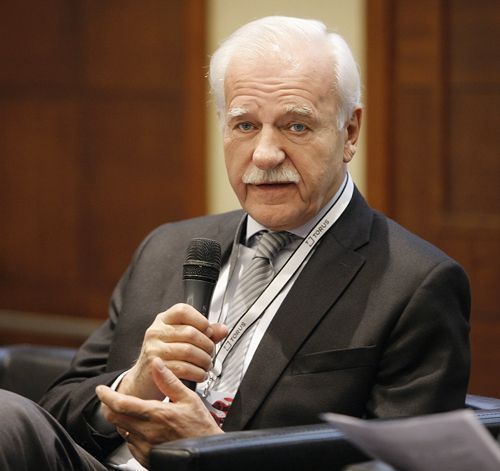Don’t forget the debt!
Investment & Finance
Another solution would be to recruit a labour force from abroad and we have been doing this, but not in a steady, coherent manner. It has only been done in a haphazard way. Hostile attitudes towards foreigners have also, unfortunately, taken root in Poland. Because of this there will also be pressure not to let foreigners in. But what people have to be made aware of is that in the long run the economic growth rate is equivalent to the growth in the labour force and the investment growth rate. If the labour force does not grow, then efficiency has to be significantly improved. And to achieve increased efficiency, investment has to go up – in infrastructure, machinery as well as modern technology. However, this has not been growing either. This is why the growth rate forecasts are rather pessimistic – next year we should stabilise at the level of 2 pct per year. This means that we will be stuck in the so-called medium income trap.
What will happen after 2020 when the large EU subsidies come to an end?
They should be replaced by private investment. This should come from our own sources, but Poles are not in the habit of saving – they have no incentive to do so when there are consumption stimuli instead. Foreign investment also needs to be allowed to flourish – but the country has become hostile towards foreign countries. So far this has not been reflected in actual measures but in political statements – declarations that we care more for Polish rather than international capital. However, this can only discourage foreigners from investing in Poland. So a sudden growth in foreign investment shouldn’t be expected either, even though this could fill the gap left by the EU funds coming to an end.
How might rising interest rates in Poland and the EU affect the servicing of the budget deficit and the general state of the Polish economy?
As a former Minister of Finance I can only regret that we have not even had one single year in Poland when we’ve had a budget surplus, in which we managed to establish a healthy culture of public finance discipline. Instead, the paradigm that has been established is that a good budget is one that has a small deficit. Any rational person would find such an attitude incomprehensible – you cannot accumulate debts indefinitely. Meanwhile, the national debt has continued to grow and the costs related to servicing it have become a significant item in the budget – and it will become an even more pressing issue now, particularly given that we have acquired fixed liabilities, such as additional pension provision, the 500+ family support programme, and so on. So the prospects are not very good in this respect. Running up debts only makes sense if the funds obtained are destined for investment rather than consumption. At present the costs of servicing the debt are not high, but they will increase significantly when inflation kicks in. The European Central Bank has so far declared that it is unlikely to increase interest rates next year and that things should be relatively calm until then. However, the UK and the US have been raising their interest rates. And we all know what happens then. If a country with any of the main currencies that are considered to be very safe and stable increases its interest rate, capital floods into them from riskier markets. In order to stop this we need to increase the interest on bonds to encourage investors to buy our debt. This in turn leads to an increase in the debt servicing costs and serious budget problems. On the one hand, we have fixed expenses, on the other the costs of servicing our debt are set to grow. And politicians are not too keen on increasing taxes to pay for this, as this slows down growth. You can put these issues off for a while, but if you do this indefinitely, later on, in extreme cases, it could lead to the kind of situation we have seen in Greece.
More on inflation, interest rates and investment in Poland on Eurobuild TV:





















































